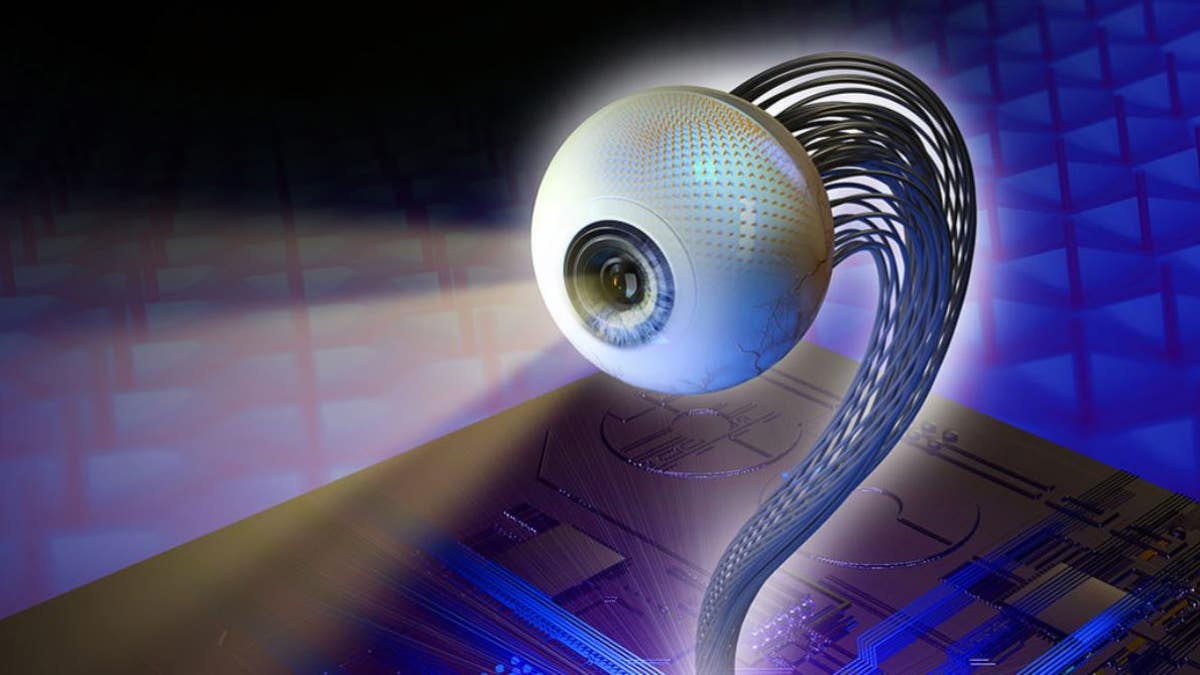Fox News Flash top headlines for May 21
Fox News Flash top headlines are here. Check out what's clicking on Foxnews.com.
We might be one step closer to a bionic man becoming a reality and not just a science-fiction plotline.
Scientists have created an artificial eye that could provide vision for humanoid robots, or perhaps in the future function as a bionic eye for those who are visually impaired, according to researchers.
A group of Hong Kong University of Science and Technology researchers built the ElectroChemical Eye, known as EC-Eye, to resemble the size and shape of a biological eye, but with much more potential.
NEARLY HALF OF ACCOUNTS TWEETING ABOUT CORONAVIRUS ARE BOTS, RESEARCHERS SAY

A new design for an artificial eyeball (illustrated) could someday give eyesight to androids, or perhaps be used as a high-tech prosthetic. (Yaying Xu, © oFantastic Color Animation Technology Co., Ltd.)
The artificial eye uses a lens to focus light onto a dense array of light-sensitive nanowires in order to mimic a human iris and retina. Information passes through the wires, which act like the brain’s visual cortex, to a computer for processing.
"Biological eyes are arguably the most important sensing organ for most of the animals on this planet. In fact, our brains acquire more than 80 percent of information about our surroundings via our eyes," the researchers wrote in their paper, which was published Thursday in Nature.
FRANCE SHOULD SELL MONA LISA TO COVER COVID-19 ECONOMIC DAMAGE, TECH CEO SAYS
“In the future, we can use this for better vision prostheses and humanoid robotics,” engineer and materials scientist Zhiyong Fan, who co-authored the paper, told Science News.
The robotic eye can register changes in lighting a bit faster than human eyes and it can see dim light about as well as human eyes, according to Science News.





















